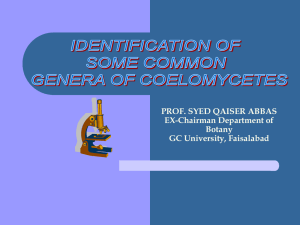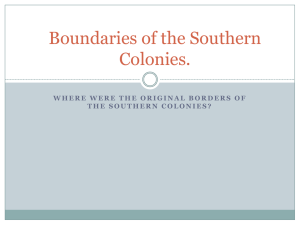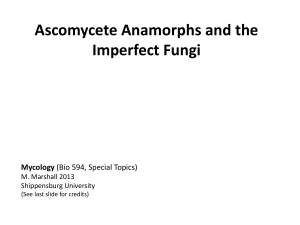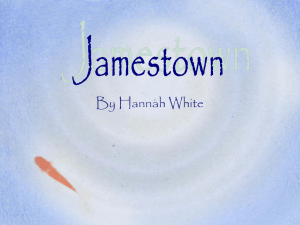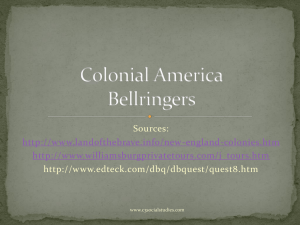wet conidia - Squarespace
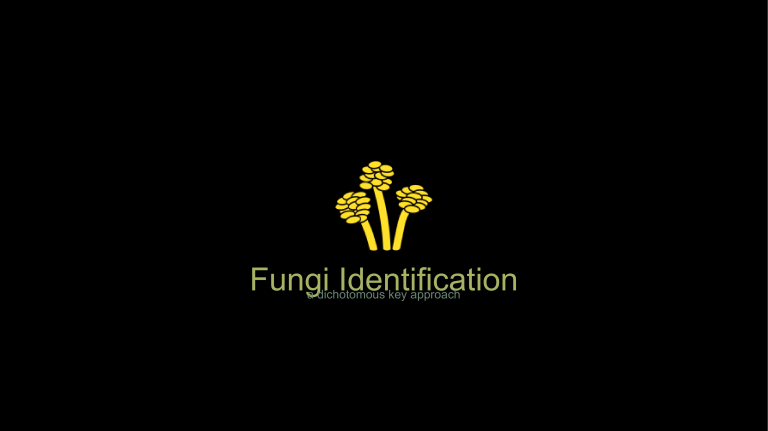
Fungi Identification a dichotomous key approach
Microscopic appearance of colonies:
budding cells few or no hyphae
Macroscopic appearance of colonies:
Aureobasidium
Chapter 8
Yeas t
Hyphal appearance:
Mucoraceous moulds
Conidial appearance:
Chapter 3
Conidia formed in chains:
Conidial chains in branches:
CHAPTER
6
CHAPTER
7
chains formed singly on sides of hyphae or on short branches
CHAPTER 4, 5,
6
Conidial chain arrangement:
chains formed in succession at the same point, aggregating in masses
CHAPTER
8
CHAPTER
10
ARTHROSPOR
IC MOULDS
Colony appearance:
Neoscytalidium dimidiatum
ARTHROSPOR
IC MOULDS
Arthrospore arrangement:
Arthrospores regularly alternating with empty cells
Arthrospores not separated by empty cells
ARTHROSPOR
IC MOULDS
Arthrospore
Size:
Wider than
2 microns
Coccidioides spp
Mostly 1 - 1.5 microns wide
Malbranchea spp.
ARTHROSPOR
IC MOULDS
Colony morphology
Colony with little aerial mycelium
Geotrichum spp OR
Trichosporon spp
ARTHROSPOR
IC MOULDS
Culture growth speed:
Rapid growth
(diameter >20mm in 1 week)
Slow growth
Onychocola canadensis
ARTHROSPOR
IC MOULDS
Arthrospore numbers:
abundant, 4-8 microns wide, rounded appearance
Hyaline variant of
Neoscytalidium dimidiatum few, 2-5 microns wide, flat-ended
Basidiomycete moulds
ARTHROSPOR
IC MOULDS
Presence of blastoconidia:
Present
Trichosporon spp
Absent
Geotrichum spp
DERMATOPHYT
IC MOULDS
Pattern of conidia:
Neither macro nor micro conidia present
DERMATOPHYT
IC MOULDS
Surface of macroconidia:
DERMATOPHYT
IC MOULDS
Presence of terminal beak on macroconidia
Absent
Microsporum gypseum
Microsporum fulvum
DERMATOPHYT
IC MOULDS
Size of
Macroconidia
Large
>50 microns
Microsporum canis
Smaller
<50 microns
Microsporum equinum
DERMATOPHYT
IC MOULDS
Colony colour:
Khaki-brown to greenish-yellow
White, cream or yellow
Epidermophyton floccosum
Trichophyton terrestre
Trichophyton ajelloi
Some purple coloration
Trichophyton rubrum
(granular form)
floccose/velvety, white with redbrown reverse, peg-like microconidia
Trichophyton rubrum
DERMATOPHYT
IC MOULDS
Colony morphology
velvety/granular, cream with dark brown reverse, round microconidia
DERMATOPHYT
IC MOULDS
Microconidia number:
Spiral hyphae, microconidia rare
(foot isolate)
Trichophyton interdigitale brown veins on colony reverse, spiral hyphae, microconidia common
Trichophyton mentagrophytes
DERMATOPHYT
IC MOULDS
Microconidia shape
small, ovalround with a wide base
flat, white, velvety, bright yellow reverse
Trichophyton erinacei
DERMATOPHYT
IC MOULDS
Colony
Morphology:
buff-cream, velvety, brown reverse with yellow edge
Trichophyton equinum
floccose, white, reverse NOT yellow
DERMATOPHYT
IC MOULDS
Colony Growth
Rate:
Slow-growing
(<10 mm/wk)
Intermediate
(10-15mm/wk)
Rapid
(20-30mm/wk)
Trichophyton verrucosum
(sporulating variants)
Trichophyton rubrum
(poorly-pigmented variants)
Trichophyton interdigitale
(downy form)
DERMATOPHYT
IC MOULDS
Colony
Morphology
heaped, pink or yellow tinge, reverse yellow, reflexive branching at colony edge
(slow)
Trichophyton soudanense reverse brownish, broad-based microconidia, formed at end of hyphal side branches
Microsporum persicolor
DERMATOPHYT
IC MOULDS
Colony
Morphology
granular/velvety, reddish colour, reverse darkbrown, clear white edge
Trichophyton rubrum
(granular form) granular/velvety, brown to cream, reverse dark-brown with colourless edge
Microsporum tonsurans
DERMATOPHYT
IC MOULDS
Growth Rate:
DERMATOPHYT
IC MOULDS
Colony
Morphology:
Densely floccose
Trichophyton rubrum
DERMATOPHYT
IC MOULDS
Colony
Colour:
Reverse pale pinkish-brown, pectinate hyphae seen
Microsporum audouinii
DERMATOPHYT
IC MOULDS
Colony
Colour:
Reverse intense orange-yellow, mostly no aerial hyphae
Trichophyton interdigitale
(nodular form)
Reverse clearyellow, mostly floccose
Microsporum canis
DERMATOPHYT
IC MOULDS
Colony
Colour:
dark purple-brown, little or no aerial growth
Trichophyton violaceum
white, grey or cream, floccose or folded
DERMATOPHYT
IC MOULDS
Colony
Morphology:
colony almost microscopic, floccose
Trichophyton verrucosum
DERMATOPHYT
IC MOULDS
Microscopic appearance:
Nail-head hyphae and favic chandeliers present, grows without thiamine
Trichophyton schoenleinii
Nail-head hyphae and favic chandeliers absent, thiamine dependent
Trichophyton concentricum
Order onygenales
Presence of conidia:
absent
Paracoccidioides brasiliensis
Order onygenales
Conidia morphology:
conidia large, spherical, rough-walled or tuberculate
Histoplasma capsulatum
Order onygenales
Conidia size:
Order onygenales
Conidia arrangement:
broad-based on acutely angled conidiophores
Geomyces pannorum very narrow based, on sides of hyphae or on short stalks
Blastomyces dermatitidis
Order onygenales
Colony morphology:
cinnamon-brown in centre, some conidia on swollen hyphal cells
Myceliopthora thermophila white to cream in centre, conidia
NOT on swollen hyphal cells
Chrysosporium keratinophilum
dematiaceous hyphomycetes
Conidial forms:
dematiaceous hyphomycetes
Colony morphology:
mucoid, white or pale pink turning dark later
floccose or velvety, brownolive colour
dematiaceous hyphomycetes
Conidia morphology:
conidia produced in clusters on the sides of the hyphae
Aureobasidium pullulans conidia produced in terminal rosettes on denticles
Sporothrix schenkii
dematiaceous hyphomycetes
Conidia morphology:
dematiaceous hyphomycetes
Conidia chain length and form:
conidia chains long and rarely branching
conidial chains short and heavily branched
dematiaceous hyphomycetes
Growth requirements:
no growth or very poor growth at 37 C
Cladeophialophora carrionii good growth at
37 C and 40 C
Cladeophialophora bantiana
dematiaceous hyphomycetes
Conidial wall texture
conidia roughwalled
Cladiosporium herbarum
dematiaceous hyphomycetes
Conidial shape:
Most conidia round
Cladosporium sphaerospermum
Most conidia oval or lemon shaped
dematiaceous hyphomycetes
Conidial chain length:
conidial chains very short and compact
Fonsecaea pedrosi conidial chains longer, more divergent
Cladosporium cladosporioides
dematiaceous hyphomycetes
Conidia morphology:
conidia elongate, less than 2 microns wide
Rhinocladiella atrovirens conidia broadly oval, more than
2 microns wide
Rhinocladiella mackenziei
dematiaceous hyphomycetes
Conidia cellularity:
conidia all twocelled and thinwalled
Ochroconis gallopava
conidia with more than two cells
dematiaceous hyphomycetes
Conidia septa:
some conidia with oblique or longitudinal septa in addition to transverse septa
conidia with transverse septa only
dematiaceous hyphomycetes
Conidia morphology:
conidia in chains, most often > 3, most conidia with apical beak
Alternaria alternata conidia formed singly or in chains of 2-3, mostly without a beak
Ulocladium chartarum
dematiaceous hyphomycetes
Conidia morphology:
Conidia symmetrical
Curvularia lunata
dematiaceous hyphomycetes
Conidial septa and hila:
conidia oval with few septa and hila not protruding
conidia oval with many septa and strongly protruding hila
dematiaceous hyphomycetes
Number of septa:
conidia mostly with five septa
Bipolaris hawaiiensis conidia mostly with three septa
Bipolaris australiensis
dematiaceous hyphomycetes
Conidia morphology:
conidia NOT widest near the base, some worth projections on conidia walls
Exserohilum mcginisii
dematiaceous hyphomycetes
Conidia morphology:
conidia with both the basal septum and apical septum dark
Exserohilum rostratum conidia with basal septum only darker than the others
Exserohilum longistratum
moulds with chains of dry conidia arising from phialides
Presence of vesicles at the tip of conidiophore stalk
aspergillus species complexes
Colony colour:
aspergillus species complexes
Vesicle shape: elongated vesicle
(>100 microns long)
Aspergillus clavatus
aspergillus species complexes
Colony morphology: colony uniformly yellow-green, stalks rough
Aspergillus flavus
Colony dark green, sometimes with yellow areas, stalks smooth
aspergillus species complexes
Presence of metulae
(cell layer between vesicle and spore-forming phialides)
aspergillus species complexes
Distribution of phialides
Over upper two-thirds of small flattened vesicle
Aspergillus fumigatus
Over entire surface of large, round vesicle
Aspergillus glaucus
aspergillus species complexes
Colony morphology stalks pale brown, heads columnar in old cultures
Aspergillus nidulans
Stalks colourless, heads globose or irregular
Aspergillus versicolor
aspergillus species complexes
Colony morphology
Stalks rough, colony orange brown
Aspergillus ochraceus
aspergillus species complexes
Colony colour dull grey to charcoal
Aspergillus ustus yellow to buff
Aspergillus flavipes
aspergillus species complexes
Colony colour: black or dark brown
Aspergillus niger cinnamon-brown to sand-coloured
Aspergillus terreus white or pale cream
Aspergillus candidus
other chain-forming enteroblastic moulds
Colony colour:
colony green
Penicillium spp
other chain-forming enteroblastic moulds
Conidia morphology: conidia large, round, with a flat scar
Scopulariopsis brevicaulis
conidia small, oval, with a minute scar
other chain-forming enteroblastic moulds
Conidia colour: colony pale purple
Purpureocillium lilacinum colony greenish-buff
Paecilomyces variotti
moulds with wet conidia adhering in masses
Colony colour:
white, grey, pink OR red colonies
moulds with wet conidia adhering in masses
Colour of old colonies:
remain white or pink without brown pigment
moulds with wet conidia adhering in masses
Presence of macroconidia:
(only unicellular microconidia present)
moulds with wet conidia adhering in masses
Macroconidia morphology: macroconidia straight with round ends
Fusarium lichenicola
macroconidia curved with pointed ends
moulds with wet conidia adhering in masses
Macroconidia morphology: macroconidia mostly twocelled
Fusarium dimerum macroconidia on polyphialides
Fusarium semitectum
moulds with wet conidia adhering in masses
Microconidia arrangement:
microconidia on short phialides
microconidia on long phialides
moulds with wet conidia adhering in masses
Microconidia morphology: microconidia elongated, some forming chains
Fusarium proliferatum or
Fusarium verticilloides microconidia ovoid to kidneyshaped, not in chains
Fusarium oxysporum
moulds with wet conidia adhering in masses
Conidia size: conidia mostly wider than
2 microns
Fusarium solani conidia narrower than
2 microns
Acremonium strictum
moulds with wet conidia adhering in masses
Colony morphology:
moulds with wet conidia adhering in masses
Phialide morphology: long and tapering reduced to short outgrowths of hyphal cells
Acremonium kiliense or
Phaeoacremonium parasiticum
Lecythophora mutabilis short annelids with swollen bases
Scedosporium prolificans
moulds with wet conidia adhering in masses
Conidia size: conidia large,
6 - 12 microns long
Scedosporium apiospermum conidia smaller,
3 - 7 microns long
Phaeoacremonium parasiticum
moulds with wet conidia adhering in masses
Presence of collarettes on conidiogenous cells:
moulds with wet conidia adhering in masses
Collarette morphology: minute and cylindrical flared or reflexed cup-shaped or funnel-shaped
Phaeoacremonium parasiticum Pleurostomophora richardsiae Phialophora verrucosa
moulds with wet conidia adhering in masses
Presence of two-celled yeasts: two-celled yeasts abundant; large annellidic pegs
Hortaea werneckii
two-celled yeasts absent, minute annellidic pegs
moulds with wet conidia adhering in masses
Conidia arrangement: branched conidiophores of thick-walled segments
Exophalia spinifera
conidia borne on sides of hyphae, or on simple branches
conidia borne on short annelids with swollen bases
Scedosporium prolificans
moulds with wet conidia adhering in masses
Growth features: grows at 40C; nitrate test negative
(some conidia formed without obvious annellidic pegs)
Exophalia dermatitidis no growth at
40C, nitrate test negative
(annellidic pegs visible)
Exophalia jeanselmei
mucoraceous moulds
Sporulation on Sabouraud’s Dextrose
Agar
No
mucoraceous moulds
Colony morphology and growth:
colonies floccose, rapid growth at 37C
colonies floccose, no growth at 37C
colonies membranous and waxy, slow growing
mucoraceous moulds
Spore formation: spores produced outside a vesicle
Cunninghamella bertholletiae
spores produced inside a sporangia
mucoraceous moulds
Sporangia morphology: sporangia with funnel-shaped bases
Lichtheimia corymbifera
sporangial base narrowing abruptly to a stalk
mucoraceous moulds
Stalk morphology:
stalks with a few side branches
mucoraceous moulds
Branching of sporangia one or two small sporangia just under main sporangia
Rhizomucos pusillus branches more widely spaced, often curved
Mucor circinelloides
mucoraceous moulds
Colony morphology: colony 3-5mm deep, sporangia grey
Rhizomucos pusillus
colony filling the plate air space, sporangia black
mucoraceous moulds
Stalk and spore morphology: stalks about
500 microns long, spores 4-
6 microns
Rhizopus microsporus stalks over
1000 microns long, spores 6-
8 microns
Rhizopus arrhizus
mucoraceous moulds
Sporangia morphology and
Presence of Rhizoids: sporangia black, rhizoids prominent at base of stalk
Rhizopus stolonifer
sporangia pale or brownish, rhizoids absent
mucoraceous moulds
Colony colour colonies pale yellow
Mucor hiemalis colonies pale brown, some stalks with chlamydospores
Mucor racemosus
mucoraceous moulds
Spore morphology: spores without conical papillae
Basidiobolus ranarum spores with conical papillae
Conidiobolus coronatus
mucoraceous moulds
Nature of spores: motile zoospores produced in liquid culture
Pythium spp.
mucoraceous sporangia produced on special media
mucoraceous moulds
Sporangia morphology: sporangia on funnel-shaped bases
Apophysomyces elegans sporangia with apical tubular extensions
Saksenaea vasiformis sporangia round, rupturing without leaving a columella
Mortierella wolfii
moulds that produce macroscopic fruiting bodies and miscellaneous moulds
Production of fruiting bodies:
moulds that produce macroscopic fruiting bodies and miscellaneous moulds
Fruiting body morphology:
moulds that produce macroscopic fruiting bodies and miscellaneous moulds
Colony colour: colonies white to buff coloured
Aphanoascus fulvescens colonies dark purple
Monascus ruber
moulds that produce macroscopic fruiting bodies and miscellaneous moulds
Fruiting body morphology: thick-walled ascocarps, covered in long brown hyphae
Chaetomium spp.
Pycnidia, with thin smooth walls
Phoma herbarum
moulds that produce macroscopic fruiting bodies and miscellaneous moulds
Fruiting body morphology: loose network of dark hyphae
Myxotrichum deflexum flattened, palecoloured with gills
Schizophyllum commune
moulds that produce macroscopic fruiting bodies and miscellaneous moulds
Fruiting body morphology:
thick-walled ascocarps, containing asci
Pycnidia, with thin smooth walls
moulds that produce macroscopic fruiting bodies and miscellaneous moulds
Ascospore morphology: large, mostly five-celled
Leptosphaeria senegalensis small, twocelled, ascocarp wall of interlocking plates
Neotestudina rosatii long, flexuous, with tapered ends
Piedraia hortae
moulds that produce macroscopic fruiting bodies and miscellaneous moulds
Conidia morphology: conidia large, two-celled when mature
Lasiodiplodia theobromae conidia small, one-celled, pycnidia with spines
Pyrenochaeta romeroi
moulds that produce macroscopic fruiting bodies and miscellaneous moulds
Colony morphology: colony flat or folded, velvety, with diffusing brown pigment
Madurella mycetomatis colony domed, densely floccose, without diffusing pigment
Madurella grisea group
identification of yeasts
Colony morphology: minute colonies on glucose peptone agar presumptive
Malassezia furfur pink or red colonies on glucose peptone agar presumptive
Rhodotorula spp OR
Sporobolomyces spp
white or cream colonies on glucose peptone agar
positive
Candida albicans
Candida dubliniensis
Candida africana identification of yeasts
Germ Tube test:
present presumptive
Cryptococcus spp.
identification of yeasts
Presence of capsule:
positive presumptive
Cryptococcus spp.
OR Trichosporon spp
OR Malassezia pachydermatis identification of yeasts
Urease test:
identification of yeasts
Presence of chlamydospores on cornmeal agar:
present
Candia albicans
Candida dubliniensis
identification of yeasts
Presence of arthrospores on cornmeal agar:
identification of yeasts
Presence of budding cells on cornmeal agar: present presumptive
Trichosporon spp
OR Saprochaete capitata negative dichotomously branching hyphae present
Geotrichum candidum
present presumptive
Candida spp identification of yeasts
Pseudohyphae present: negative
Neoscatylidium dimidiatum
Microscopic
Features
Macroscopic
Features dy/dx: clinical significanc e skin and nail infections among immigrants from the tropics and sub-tropics.
Not contagious (unlike dermatophytosis)


